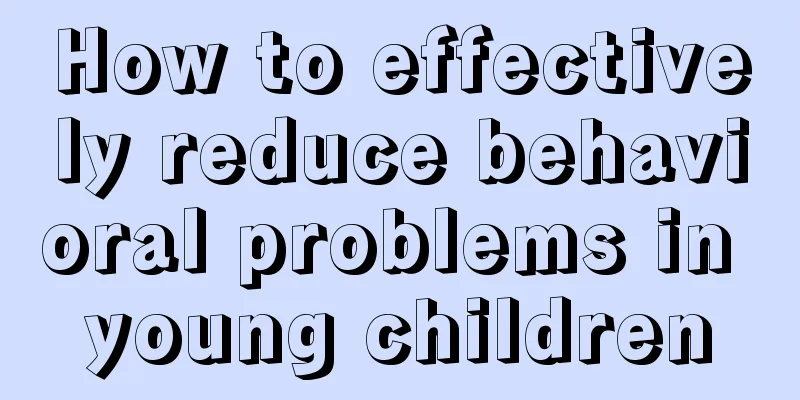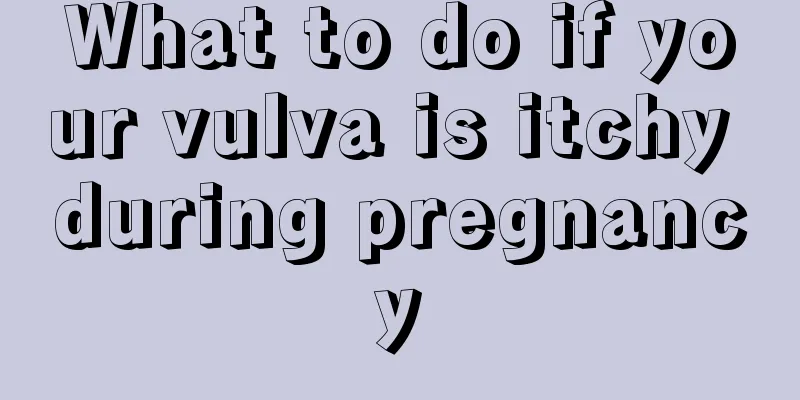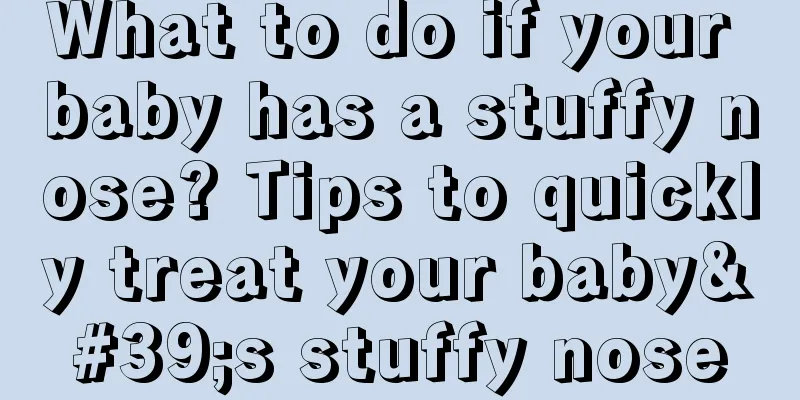What are the symptoms of umbilical cord infection in newborns?

|
When you become a parent, don't forget to take care of your newborn's umbilical cord as part of your child's daily care. Within a few weeks, the umbilical cord will turn brown, dry and harden, and eventually fall off naturally. So what are the symptoms of a newborn's umbilical cord infection? Residual umbilical cord careEvery time you change your baby's diaper, pay special attention to the base of the remaining umbilical cord, near the belly button, and gently wipe away any wet dirt. Cotton swabs come in handy at this time. Don't worry about hurting your baby because there are no nerve endings at the umbilical cord head. Try to keep the remaining umbilical cord clean to promote the healing process. Avoid friction between the diaper and the remaining umbilical cord. You can fold the diaper under the remaining umbilical cord or use a newborn diaper with a notch. Allow the cord to fall off naturally. In the past, people would recommend using alcohol to clean the cord, but new research shows that cord that dries naturally will fall off faster. The baby's belly button is concave or convex. Some parents will use coins, tape or plastic wrap to press the remaining umbilical cord to try to change the natural shape of the baby's belly button. This is of course useless and may cause allergies. Before the cord falls off, it's best to give your baby a quick bath with a sponge, rather than letting the cord sit in water. Once the cord falls off, you can let your baby soak in the tub or sink. Symptoms of umbilical cord infectionIf the remaining umbilical cord oozes yellow pus, emits an unpleasant odor, or the skin at the bottom becomes red and swollen, it means that the baby may have been infected and it is recommended to seek medical treatment. Dry umbilical cord residue may also cause skin allergies and redness. To identify the cause of the allergy, you can gently pull away the umbilical cord residue to expose the reddened skin and then mark the area of redness. Check again after 30 to 60 minutes. If the skin is still red or even beyond the mark, you should seek medical attention immediately. If the redness is purely due to residual umbilical cord allergy, it will heal naturally soon. Your baby's belly button may bleed occasionally. This is a normal phenomenon when blood vessels separate. If you notice bleeding in your baby, you can try to stop the bleeding by gently pressing. If the bleeding does not stop after pressing for five to seven minutes, you should go to the doctor. After the umbilical cord falls off, your baby's belly button may be slightly swollen and leak fluid, a condition called an umbilical granuloma. Your doctor may prescribe a drying medication called silver nitrate to treat this. Umbilical cord care precautionsAt each diaper change, wipe away any remaining umbilical cord with a clean, damp cotton ball or cotton swab. Pay special attention to the base of the remaining umbilical cord closest to the navel, where moist dirt may accumulate and needs to be wiped away gently but thoroughly. Make sure that there is air circulation on the surface of the remaining umbilical cord. If the remaining umbilical cord becomes red or has discharge, seek medical attention immediately. |
>>: What should new parents do if they don’t know how to raise children? 4 parenting methods to know
Recommend
Are electronic mosquito repellents harmful to babies? Do electronic mosquito repellents have any effect on pregnant women?
Electronic mosquito repellent is a very good mosq...
How to care for postpartum wounds and how to quickly restore the uterus after childbirth
Women's figures and bodies will change after ...
How much Ariel laundry detergent should be used at a time? Does Ariel laundry detergent have the effect of removing mites?
Nowadays, laundry detergent is often used for was...
Can pregnant women eat broccoli? Boosting immunity in pregnant women
Everyone knows that the health of pregnant women ...
How many months does it take for pregnant mothers to start taking calcium supplements? How to take calcium supplements in the early, middle and late stages of pregnancy?
Pregnant women are a very special group, and calc...
Is it normal to have stomach pain during pregnancy? What if the fetus has no heartbeat during the third month of pregnancy?
Many women experience stomach pain during pregnan...
Can I wear a body shaping garment after giving birth? How long after giving birth can I wear a body shaping garment?
In order to prevent obesity after childbirth, man...
Does Zhenshiming eye drops have anti-inflammatory effects? How many types of Zhenshiming eye drops are there?
I don't know why there are a lot of red blood...
Is it normal to have more vaginal discharge before giving birth?
Before giving birth, the mother's vaginal dis...
Should baby food be added with oil? What kind of oil should be added to baby food?
As babies grow older, mothers need to start addin...
What is the best food to eat when preparing for pregnancy? What foods are good for pregnancy?
Proper diet during pregnancy preparation can grea...
The best time and techniques for conception What are the symptoms of conception
Preparing for pregnancy is a difficult process, e...
Can I eat spicy food during breastfeeding? What effect will eating spicy food during breastfeeding have on the baby?
Breastfeeding mothers are very careful about thei...
Does the humidifier have radiation? Can pregnant women use humidifiers?
Humidifiers can be used both during the day and a...
What are the benefits of children playing games? How should parents limit it?
Children love to play video games. Basically, pla...









